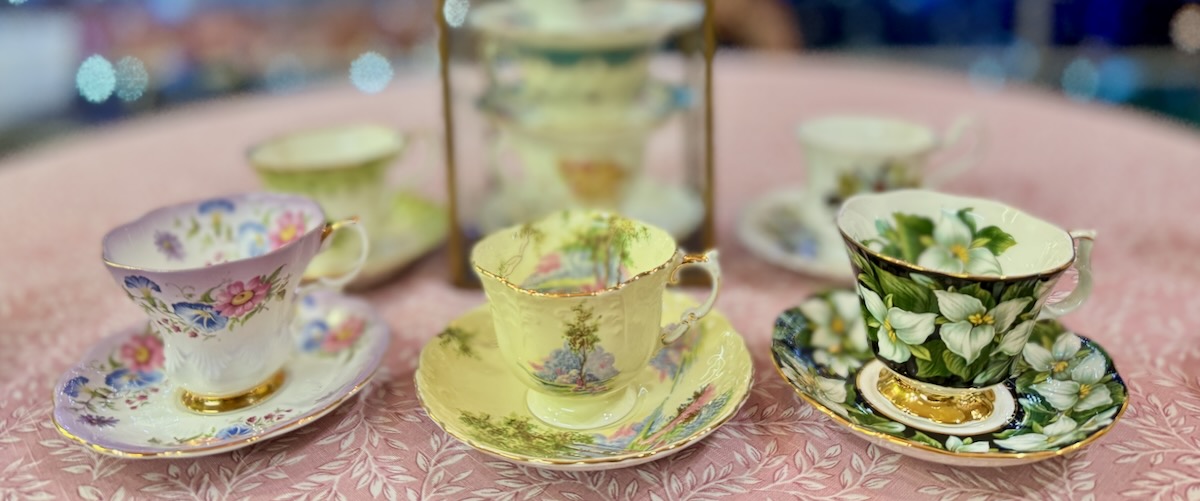Southern Vintage Table was gifted a stunning new set of vintage English teacups, each a masterpiece of history and design. Reflecting a rich heritage of English tea culture, these floral beauties showcase intricate patterns and delicate craftsmanship. These vintage teacups were part of a collection that was dearly loved by their owner, and we have chosen a few of our favorites to share today.
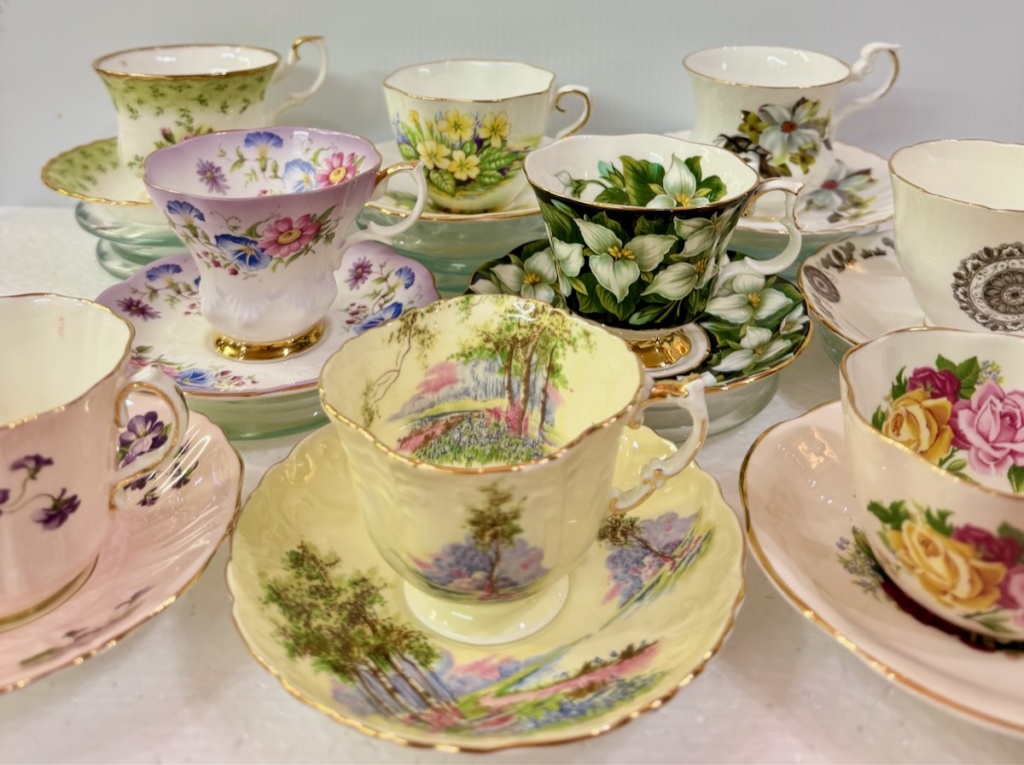
Aren’t these stunning? Underneath the cup and saucer is a mark that reveals a bit of information. All are marked with “England” or “Made in England,” which reveals the relative age, and all say “Bone China.” Let’s explore the meaning of both.
Here’s the scoop on the country information, and its history goes back to the late 1800s.
“William McKinley, the 25th President of the United States, introduced the McKinley Tariff Act in 1890. This act imposed a tariff on imported goods in an effort to protect the livelihood of American manufacturers. The Act required all imports to carry the name of the country of manufacture. In 1921, the Act was amended to include “Made in” before the country name, ensuring clear identification of imported products.”
Three of these teacups say only “England” which means these are over 100 years old!
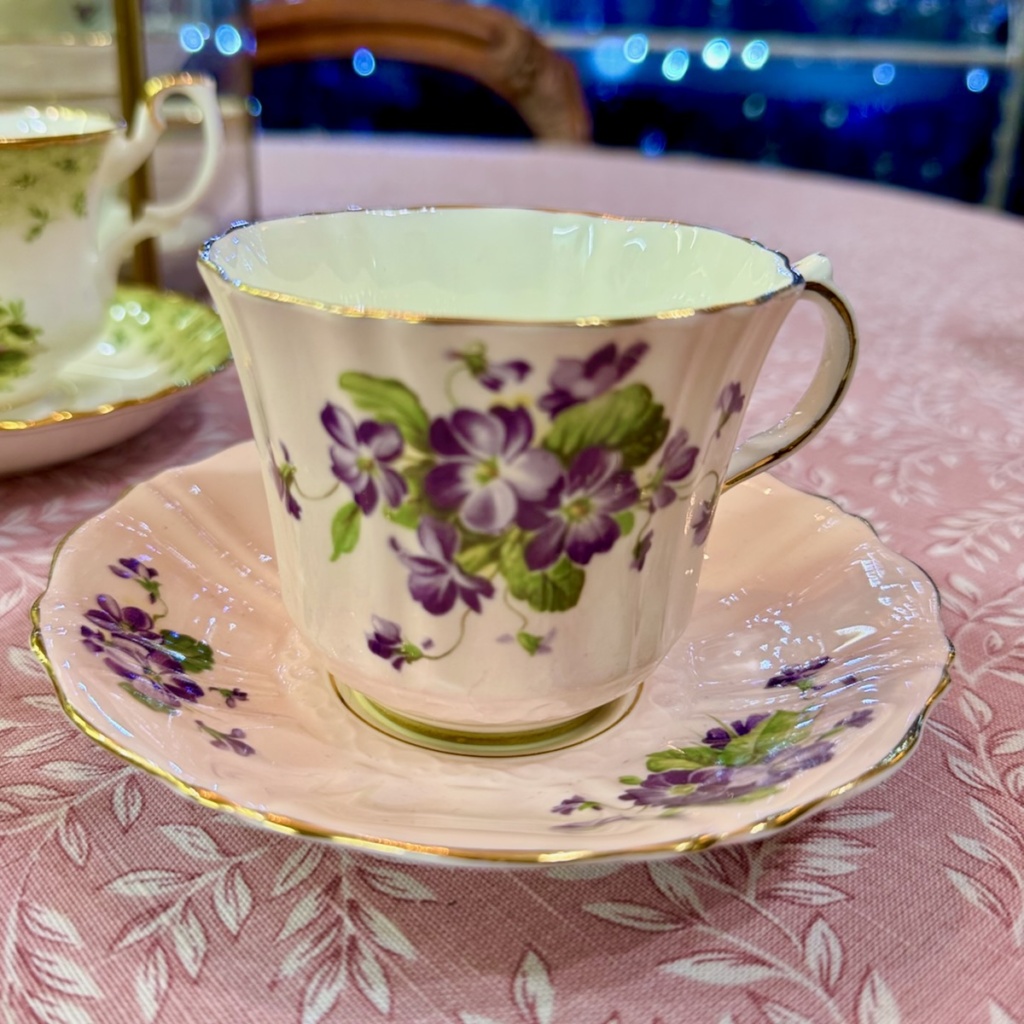
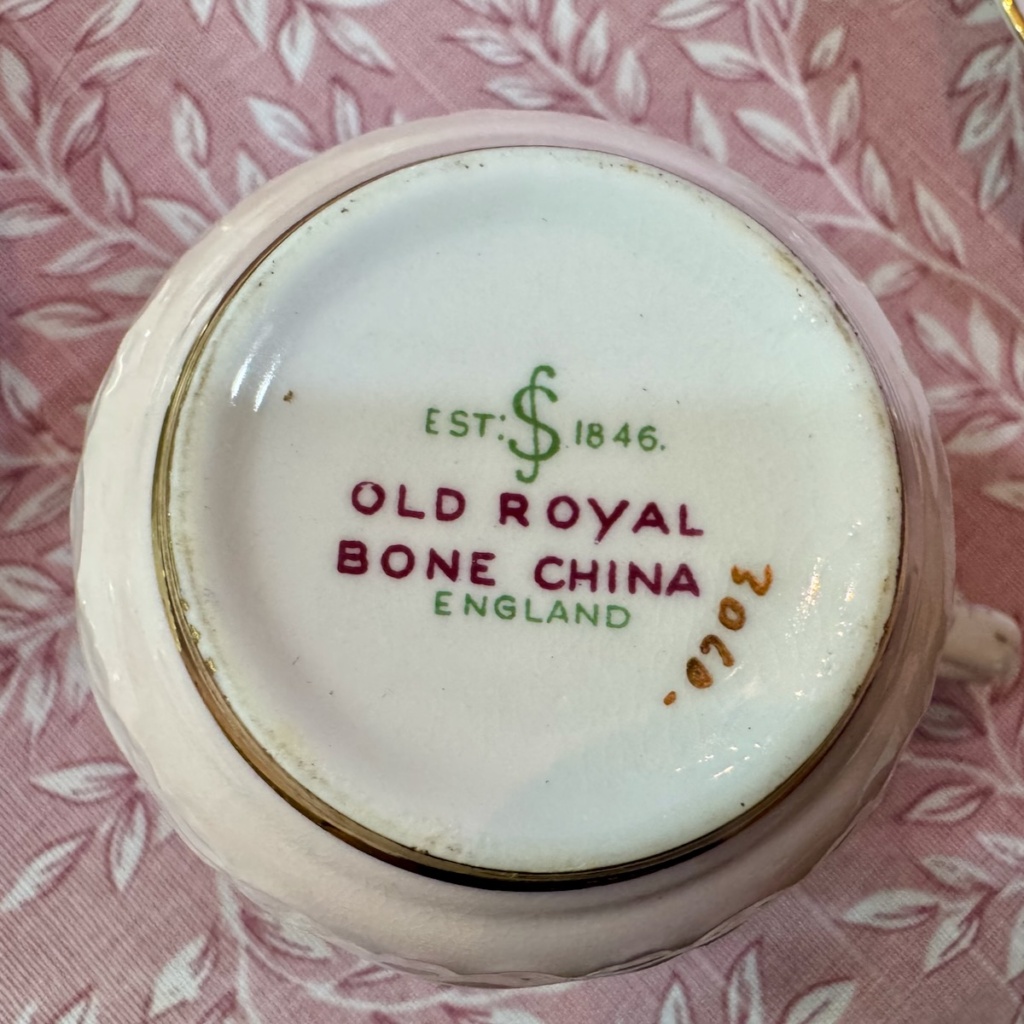
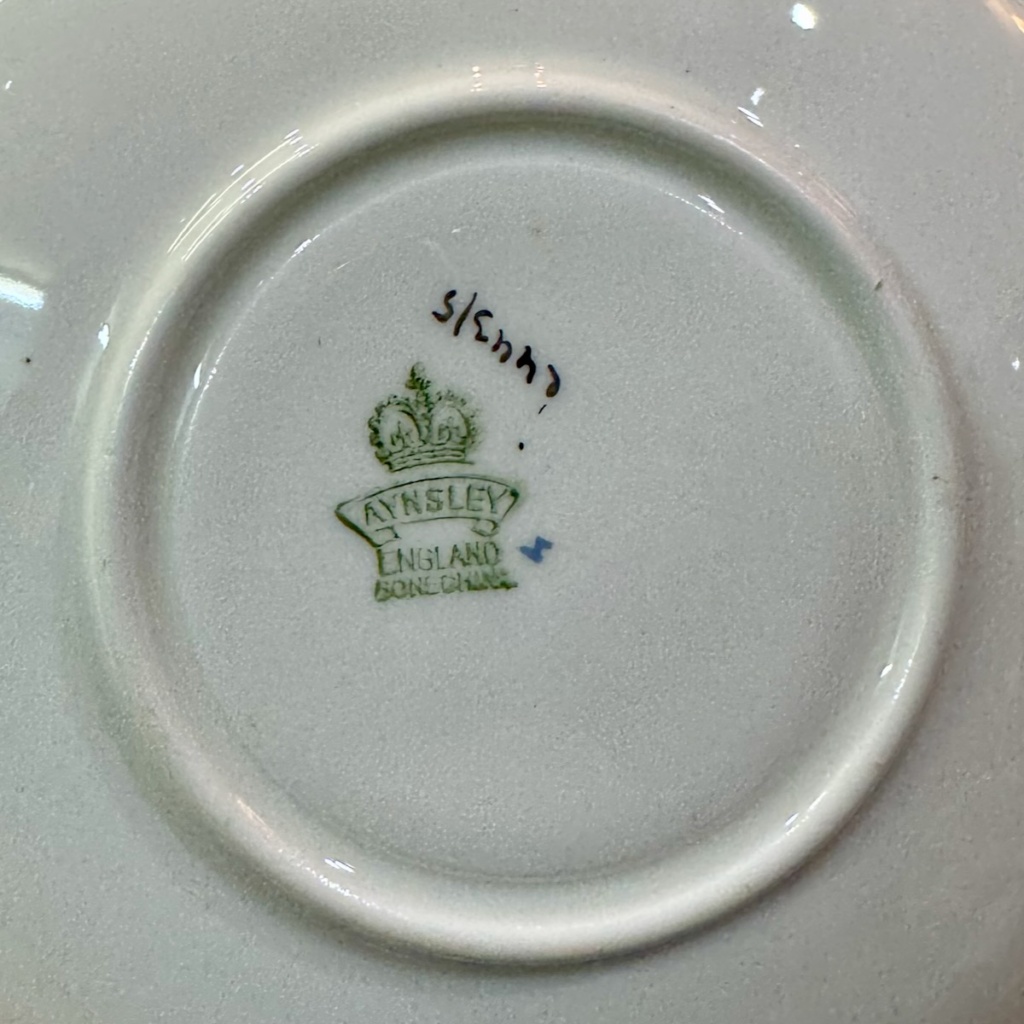
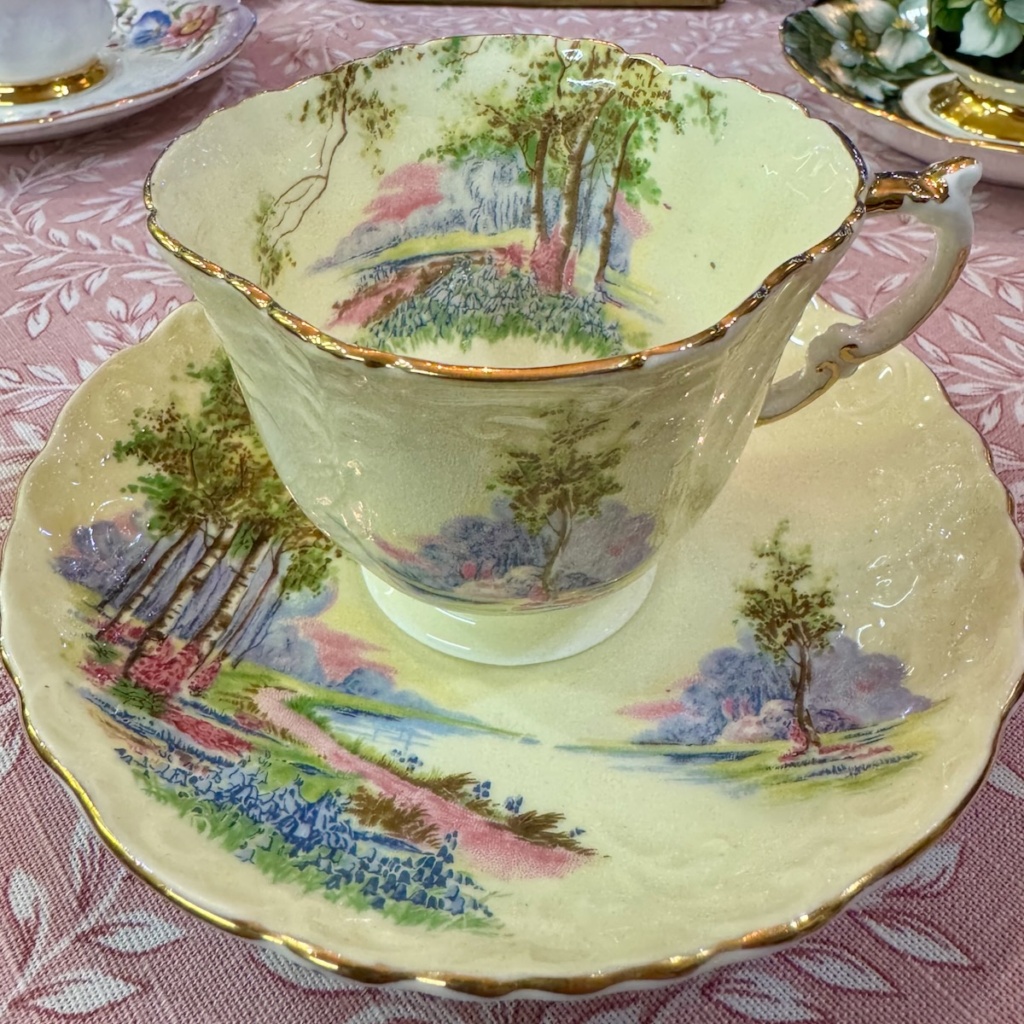
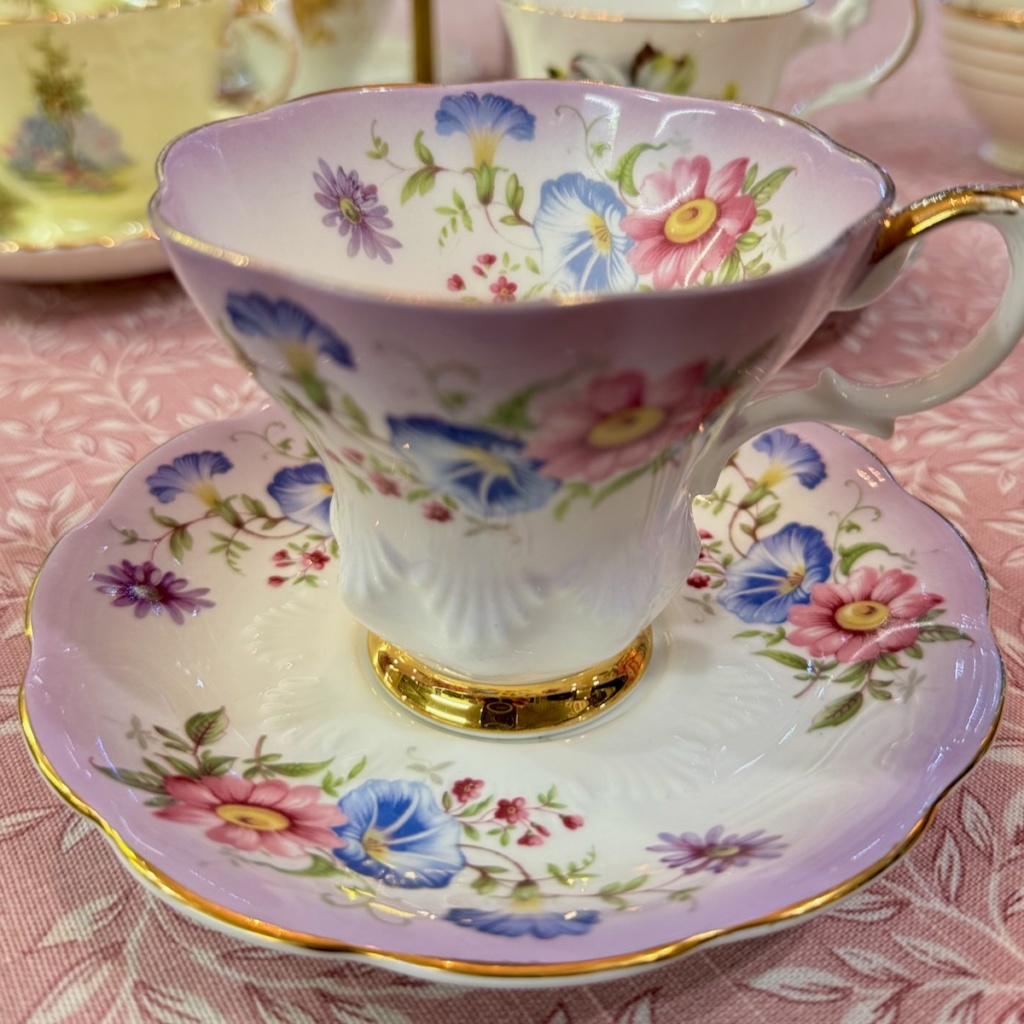
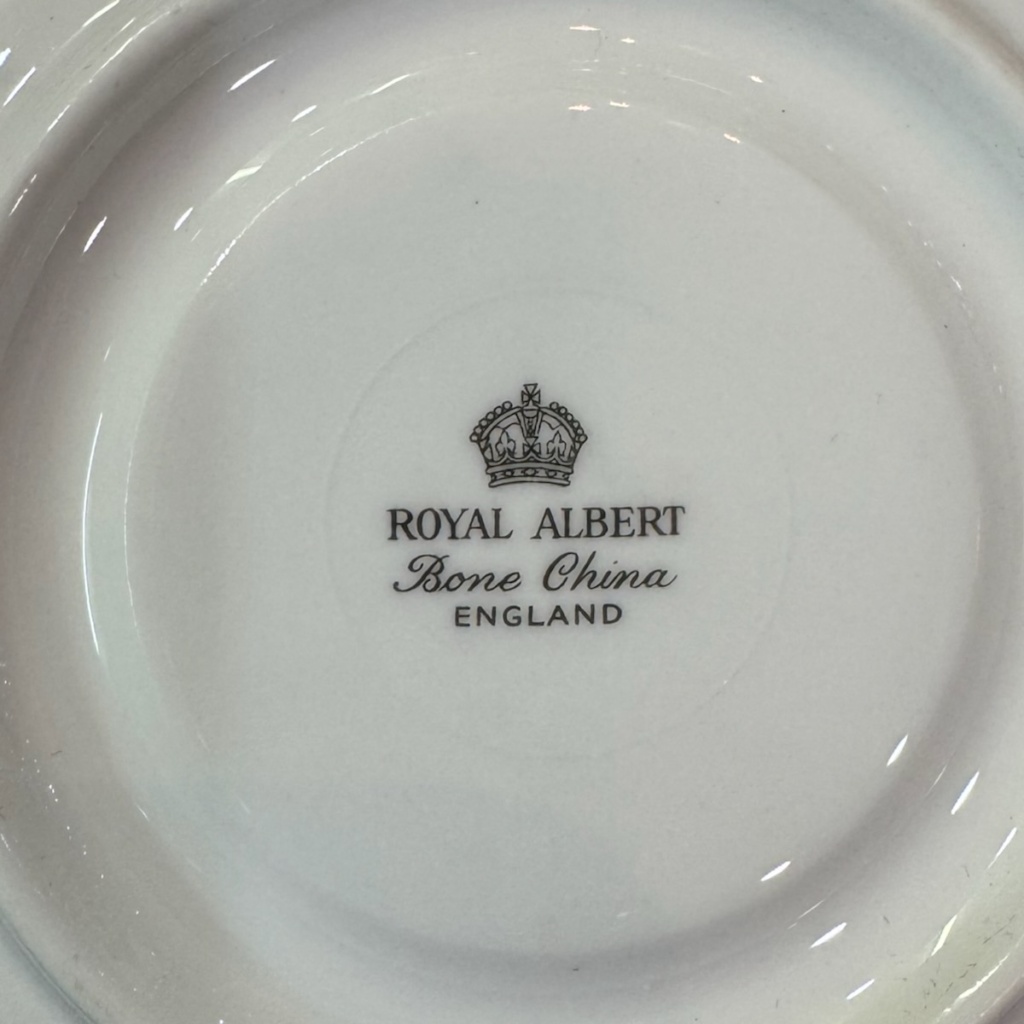
Now for the bone china part. Yes, a key part of the formula for bone china is bone ash. Formulated in the mid 1700s with cattle bones from the nearby slaughterhouse and then improved in the early 1790s by – get this – Josiah Spode of Spode China! It is still used today by England’s potteries and this formula (6 parts bone ash, 4 parts china stone and 3.5 parts kaolin) is the standard across the globe. As a result, bone china is prized for its strength, the ability to be thin, and its translucency.
Thank you, Kelly, for gifting these beauties to our company. We are thrilled to offer these exquisite pieces to our future clients, who will enjoy them at their tea parties. Their elegance and charm will undoubtedly enhance the experience, making every sip a moment to cherish.


